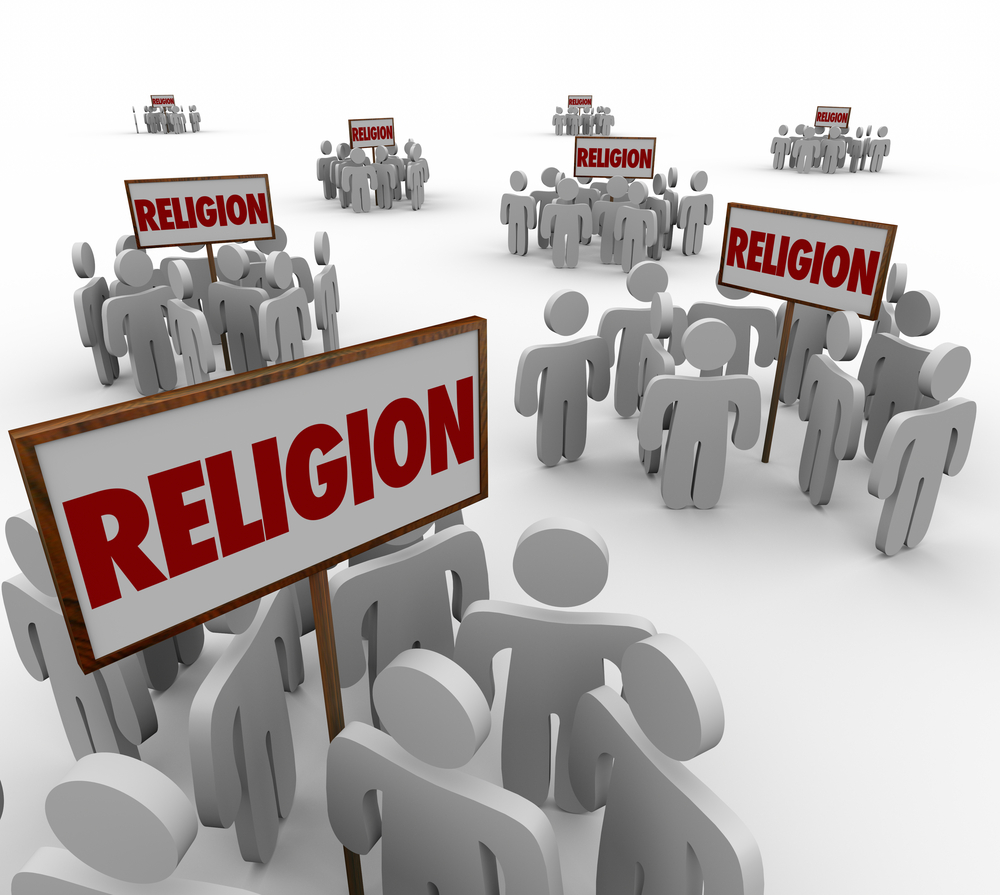
Whether you move in religious circles or not, you’ve likely heard of churches, denominations, and sects. To some people, these terms are distinct and disparate, while others use two or more of these terms interchangeably. From a sociological standpoint, these words have very different meanings and connotations. As a religious actor who may be called upon to marry a couple of a particular faith (or lack thereof), it’s important to understand the distinction between churches, denominations, and sects.
Understanding the Church-Sect Continuum
The work of German sociologist Max Weber led to the creation of a continuum or a spectrum along which religions fall. On one end, you have organizations that arise out of protest against a prevailing system or faith. On the other end, you have organizations that maintain a sense of equilibrium. According to this continuum, sects fall on the protest side while churches are on the equilibrium-maintaining side. Between these ends of the continuum, you have cults and new religious movements, institutionalized sects and denominations. This spectrum provides a framework that helps understand the establishment and metamorphosis of various faith systems and religions.
Checking for Churches
Religious scholar and author Ronald L. Johnstone suggests the following characteristics are typical of churches:
- Belief in and practice of religious monopoly, attempting to eliminate competing faiths
- Belief in universality, equating citizenship with membership
- Attachment to state and secular powers, such as governments
- Employment of full-time, credentialed and formally ordained clergy
- Growth through natural reproduction and indoctrination of youth
- Diversification and evolvement through the creation of new orders, instead of forming new religions
Some examples include Catholicism and Islam, particularly in nations where there is no separation between church and state.
Deciphering Denominations
Denominations lie between churches and sects. They tend to form when a particular church loses its religious monopoly in a segment of society. Per Johnstone, denominations tend to have these characteristics:
- Good relationships with state and secular powers, sometimes attempting to influence government and business
- Tolerance of other subgroups within the same faith
- Growth through the birth of children, active evangelization and acceptance of converts
- Openness to adjusting doctrine and associated practices
- Tolerance of debate and theological differences
- Adherence to worship rituals and routines
- Education and employment of certified and ordained clergy
- More direct, active involvement from members than churches
- Members tend to be from the upper and middle classes
Many of the Christian groups formed after the Reformation, such as Baptists, Methodists and Seventh-day Adventists, are examples of denominations.
Surveying Sects
Sects often form based on protests or accusations of apostasy or heresy in an established religion. Leaders of these new movements often come from lower socioeconomic backgrounds, though this commonality is not widely understood. Sects will either break up, become institutionalized or develop into denominations by establishing doctrine, rules and other structural elements to maintain order. Some examples of former sects include Lutherans, Anglicans and Baptists. Institutionalized subgroups maintain elements of their protest-based origins without becoming denominations. Examples of these include the Amish and Mennonites.
Considering Cults
In the context of the church-sect continuum, cults and other new religious movements resemble sects. Cults tend to be nontraditional religions that are based on a belief of the individual as being divine. Unlike sects, cults tend to embrace a new way of belief instead of calling for a return to a pure version of established religion. Some are built on elements of older faiths and become their own denominations, such as Christian Science and the Nation of Islam. The word “cult” has a pejorative connotation and is sometimes used disparagingly by members of older churches or denominations.
Words have meanings and connotations. For some people, the terms “church”, “denomination” and “sect” are interchangeable. For others, they mean very different things and can be viewed as insulting depending on context. It’s important to respect others’ belief systems and be mindful of how you refer to their religious views.

